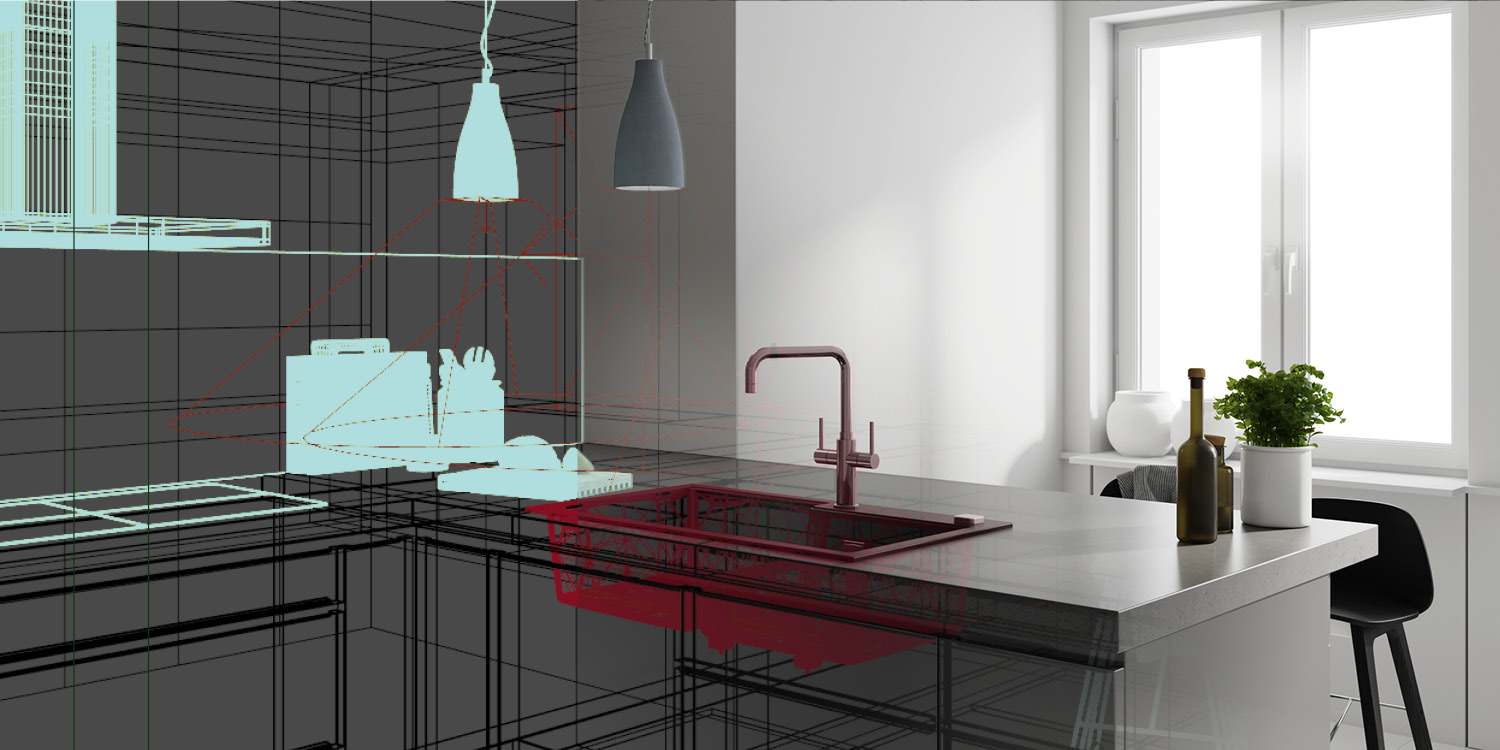
GROHE: 3D World of luxury bathroom and kitchen fittings
Construction data transformed into CGI visualizations for GROHE
GROHE is globally renowned for its full bathroom solutions and kitchen fittings. The global brand, part of the Lixil Group, is characterised by unique products in the most modern designs. And in the same vein, GROHE relies on innovative solutions in marketing, including high-quality 3D visualizations from our Home of Media.
With 3D visualizations, to clarify the term, we mean the use of CGI, computer generated imagery. Using specialised software applications we create virtual 3D models of products and environments from which photorealistic images are generated.
GROHE’s own production provides the ideal basis for our approach. Their product development and construction teams use design software to convert their latest solutions into a 3D model. The data for this model, the CAD or construction data, is the foundation for the marketing visualizations Laudert produces for GROHE.
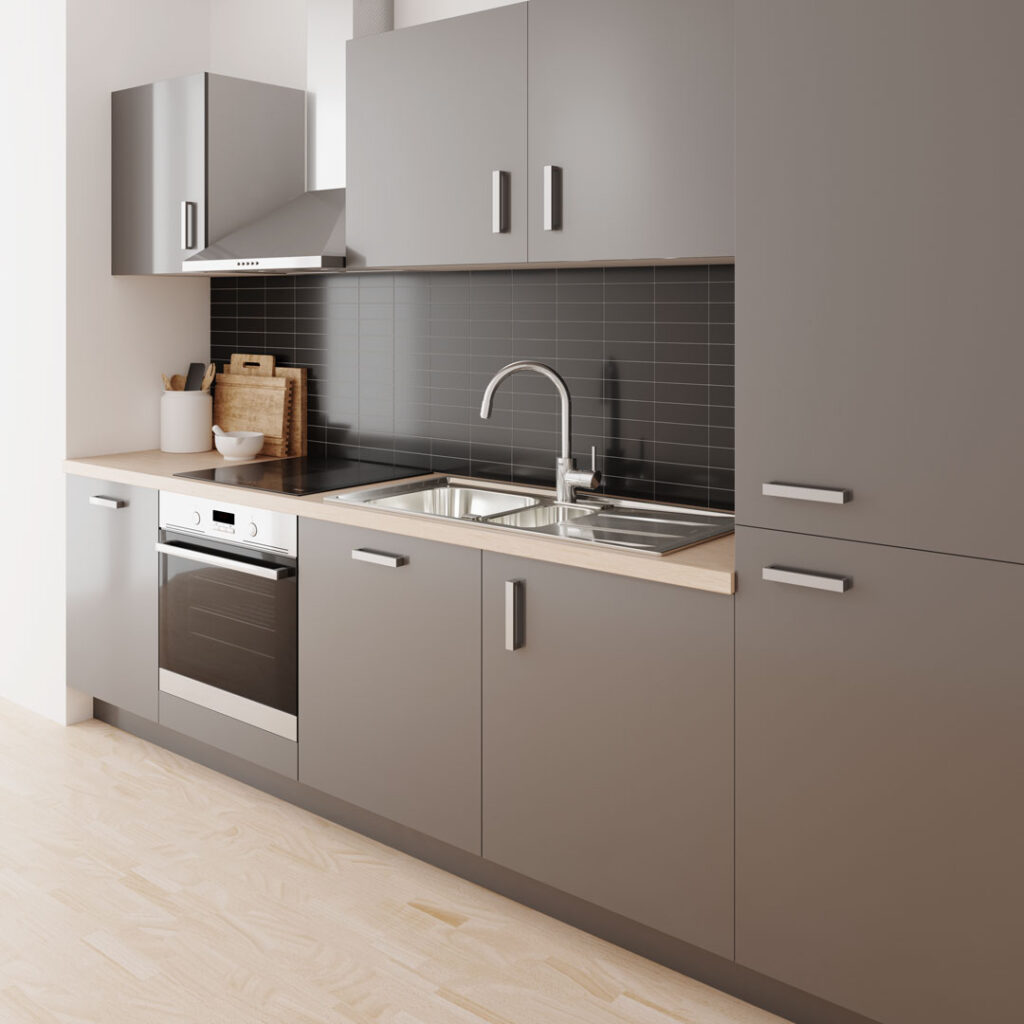
CGI for Grohe: based on CAD data
Clipping: optimising data and assigning materials
The CAD data at GROHE is high quality and very clean. The Laudert team have hardly any corrections to make; only radii and phases (e.g. rounding on the edges) need to be added to the models. These do not come into play in product development but are essential to photorealistic rendering as it is only through these reflective edges that 3D objects later appear realistic in the render.
Using three-dimensional CAD model as a basis, a photorealistic visualization is created step by step in another 3D software – in this case 3ds Max. To do so, materials are created and assigned to the model, representing not only the optical but also the physical properties of the real product. Colour and tactile properties are just as important as light reflections and shadows. Later, prints such as logos or icons are applied to the model and fitted into place.
The next step is all about the rendering itself. Observing physical calculation methods, a two-dimensional, isolated image is created using the 3D model in the perspective required by GROHE – a computationally intensive process that, even on high-end machines such as those used by Laudert, can take up to 15 minutes.
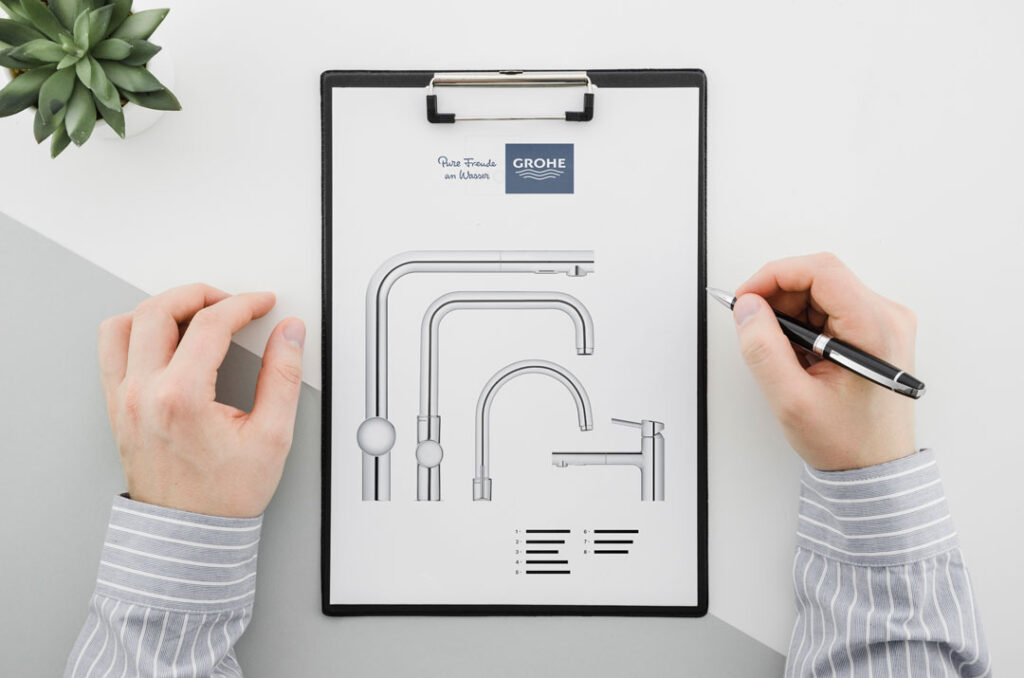
Bringing GROHE product lines to life
Perfectly staged in virtual environments
Our work for GROHE becomes increasingly complex when it comes to perfect product staging in various types of environments. After the construction data of the GROHE product lines has been cleaned, it is inserted into separately created environments, including 3D, and brought to life using shaders (materials, reflection effects, surfaces and more) in the 3D software Maya.
The environments themselves are either supplied by external service providers or, as in the example images in this article, created by Laudert’s CGI specialists. The challenge in this case is to turn a simple, no-frills kitchen into an elegant space to set off the high-quality GROHE fittings despite the plain furnishings.
Another challenge is to optimally integrate the products into their respective environment. From precise positioning to improvements in hose lengths to the exact orientation of operating handles and elements, there are many important visual details that need to be implemented within GROHE’s style guidelines in order to create the perfect asset for GROHE.
Compared to clipping, the rendering of complex environments increases the demands on computing power many times over. A single high-end workstation would spend several hours rendering. Laudert uses a render farm for complex calculations such as this, a solution where multiple servers work on an image at the same time, reducing the required time to create an image to approximately 20 to 30 minutes.
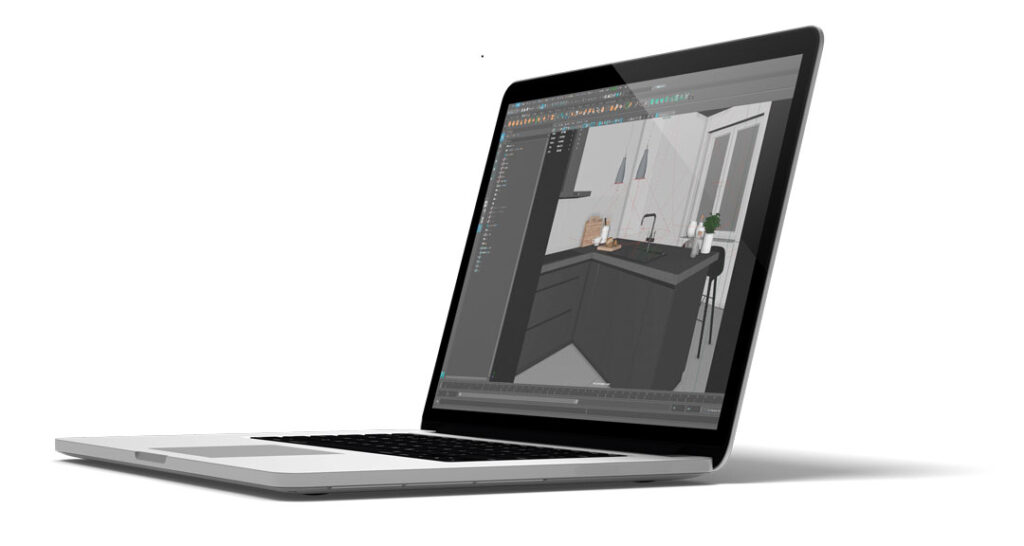
The CGI advantage: rapid modification
Changes on demand: the CGI payoff
The integration of products into virtual environments stands out as one of the ways in which CGI visualization benefits GROHE most of all. Christian Dannhäuser, Leader in Content Production, Lixil EMENA, explains, “The scenes are individually customisable, adaptable and changeable. We can change and replace details, lighting moods and materials or even entire products and units in a short period of time.“
For GROHE, Laudert relies on an image production workflow in Studio Production Management, which provides clear monitoring of all steps of the process. This includes the initiation of any necessary image correction processes, which are then carried out by Laudert media services.
The scenes are individually customisable, adaptable and changeable. We can change and replace details, lighting moods and materials or even entire products and units in a short period of time.
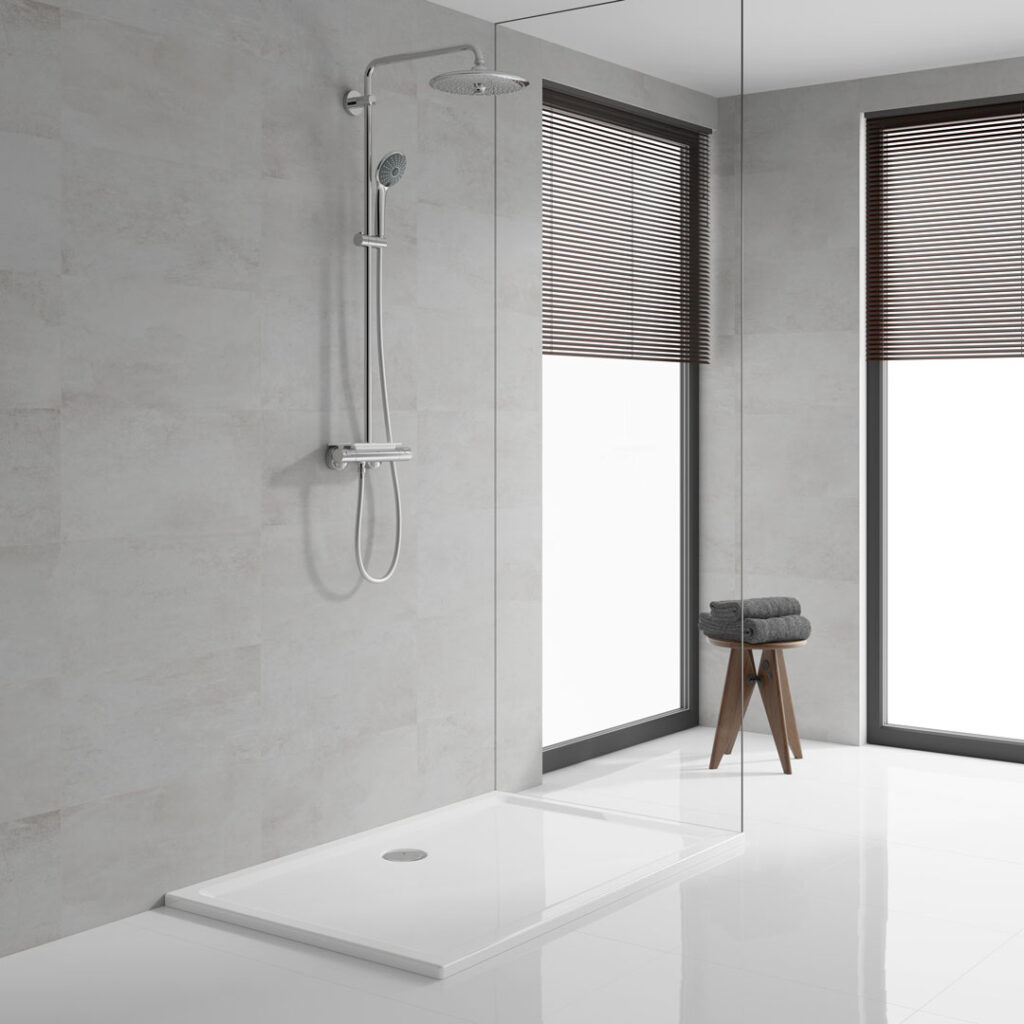
Professional expertise and mutual appreciation
Close collaboration leads to success
Direct data transmission, customer-oriented project management and close contact, in addition to the technical and professional skills on both sides, are factors key to the success of our GROHE / Laudert collaboration. André Compans, Rendering & Animation Manager at GROHE, responsible for the coordination of the teams from both companies, emphasises, “Of course, the technical expertise at the Laudert studios plays a crucial role for us. But the mutual appreciation and short communication channels are just as important.” Bathroom and kitchen 3D visualisation has resulted in a cooperation beneficial to each of our companies.